
INFOCOMM16 REPORT

Industry veteran and pundit, Paul van Der Ent, takes an unflinching look at the best and the worst of the Vegas show.
Text:/ Paul van Der Ent
Earlier in the year I waxed rhapsodical in these pages about the 2016 ISE show — amazing show. The InfoComm show in Vegas is also compelling. Tempering that is my contention that the InfoComm show is quite a bit more provincial — if you can call catering to the world’s biggest market, in North America, ‘provincial’. General consensus suggests that Australians are less inclined to attend the longer-haul Orlando version of the InfoComm show and in those years, Amsterdam becomes a very viable alternative.
InfoComm16 was, as ever, very professionally run, and well attended by a healthy cohort of Australians. Although, not all of us were healthy. There were a number of reports regarding Aussies going too hard and, in some cases, not even making it to the show floor for any of the three days. It’s unthinkable really, given the investment required to attend, and it’s a dreadful look. I guess for some individuals the carnal attractions of Vegas are just too great to resist.
BEST IN SHOW?
LG once again had a standout booth with its impressive oLED product leaving showgoers slack-jawed. But pipping them to the post for the Paul van Der Ent ‘Most Impressive Booth’ award was Christie. The booth was incredibly well themed and did a tremendous job in demonstrating all of the Christie products. Pandoras Box was running all the content, evoking the atmosphere of game time at an ice hockey stadium (Christie being Canadian, and all). I spoke to the former owner of Coolux, who sold up to Christie, and he was delighted; as he should be. The stand inspired and excited people, and that’s what it’s all about.
Other stands were quite lack lustre in comparison. Having AMX on the Harman stand… I just don’t think that works. Harman might be a brand that’s recognisable in North America (with Harman Kardon product) but it doesn’t cut much mustard anywhere else. I acknowledge that as Harman’s enormous presence in the automotive and consumer space increases internationally, that the brand will have more cachet but names like AMX, JBL, Soundcraft, AKG and Martin are currently getting lost at InfoComm… at least the way Harman has its stand currently configured and designed. By the way, word is that Harman’s automotive and consumer office in Australia has extra space to move into. Yes, it’s more than a marketing office — it’s being used to deliver product. So Harman are most definitely ‘here’.
MOST INTERESTING PRODUCT?
Biamp’s Tesiralux was probably the most interesting new product at the show. It was properly demonstrated and Biamp did a good job showing its capabilities. One mini caveat: Biamp guarantee less than a two-frame latency with the video streaming, but that’s point to point. Have a look at our full preview elsewhere this issue. It’s well worth getting to know.
QSC continues to demonstrate its credentials as a company to watch. It even had a rebadged Lumens PTZ camera joining its product ranks as it moves into the commercial space. What’s the big idea? QSC is showing it can keep everything under control on its platform, not just audio. And why would you use QNet and QSys? Become it runs rock solidly on any ol’ network. You don’t need a special AVB switch or a $100,000 10G switch. Is QSC working on putting video on its platform? I won’t answer that, but you can take a wild guess.
QSC wouldn’t be the first audio company thinking about how to respond to a digital world. Dante continues to be the dominant solution to the digital question for audio manufacturers. Audio-Technica is starting to respond. Shure is embracing Dante. AKG seems to be slow to get moving. I would say, all of these networkable microphone products released for video conferencing spaces are currently way too expensive for what they are.

IS THE IT DEPT READY?
AVB’s profile has been given a real boost now that Biamp has put the ‘V’ in AVB with Tesiralux. It shone another spotlight on AV’s convergence with IT. Up until now the message has been: AV people need to understand IT better, so we can help IT people understand AV better. Right? But with products like Tesiralux and the Lightning products from Australia’s iMAG (that are based on the Aptovision BlueRiver chip) I’d suggest we turn the question around: is IT ready for AV? I think the answer is clearly: no. They don’t get it; they don’t get AV’s requirements.
So it’s not enough for our AV product to be ‘network ready’, rather is it IT Department ready? By which I mean, for any new project or upgrade, the IT people will use IT project management processes, and in just about every case, those processes don’t suit our requirements on the network. And the process takes too long.
For example, I’m penning this article while on site at 7pm waiting for one of the major telcos to change ports on a switch so we can get a VC room working. Trouble is, the telco people we have on site, ready to provision the system, don’t have have anybody back at their office rostered on tonight. So we have a network-based AV system that IT can’t service, because IT isn’t ready for us. This will be an ongoing problem in our industry. I believe there will come a time when IT will insist we just stick all our gear on our own network — they won’t want to know about it. IT can’t deal with the ports we require for all the changes, and they can’t deal with the lack of security we sometimes require for our gear to function properly.
And back to AVB for a minute: Biamp can cheerfully point to the fact that Cisco is now making AVB-ready switches but those switches won’t talk to all the other switches in your client’s core, so I can’t imagine the IT department wanting to retire all its 2960s or 3560 enterprise switches because you want to introduce AVB onto the network. Which is why QNet is so popular right now — you don’t need to do anything for QNet to reside on a standard network.

CLOUD SURFING
Manufacturers’ reliance on the cloud was very evident at this year’s InfoComm.
First problem: security in the cloud. In my case, the job I’m working on (or not, as I sit here waiting) is a large multinational. I can tell you, they won’t go to a cloud solution because of the lack of security. That includes something like AMX RMS or Crestron’s Fusion, which by default rely on the cloud. The other consideration before you put all your chips on the cloud is Australia’s iron-age upload/download speeds — you might have 10G network but that won’t help if you have dialup internet speeds.

HEARING ASSIST: ALL EARS
There’s some real movement in the world of hearing assist systems, and it highlights the inflexibility of Australia’s building code. The building code mandates coverage quotas and most of us have been laying loops in the floor to comply.
Just to point out a few things to consider: a traditional hearing loop lacks security. You might suggest that on the 17th floor of a high-rise, it doesn’t matter. But I’ve done tests where I can pick up that hearing loop on the 12th floor and up to the 20th floor. And this is why many larger enterprise customers are turning to infrared systems. As an aside, most hearing aids don’t even have T-loop coils built into them anymore, because the quality of the transducers are just so good these days. Increasingly, hearing aids have bluetooth to connect directly to a smartphone, and I think this is the future of hearing assistance. Certainly, Sennheiser, Williams Sound and Listen Tech agree. These companies have systems that use wi-fi. The building code will have to catch up, because it currently doesn’t know how to deal with these types of systems (how do you measure coverage on a BYOD wi-fi hearing assist solution?), but they are the most useful and convenient for the hearing impaired.


BRING IT
BYOD isn’t a ‘thing’ for Gen Y and millennials, it’s just a natural part of life… like free wi-fi. And anyone with Chromecast or Airplay isn’t going to pat you on the back for making BYOD possible at work; again, it a natural part of life… like barista-made coffee.
But it does open up a whole can of security worms.
Companies, on one hand, love BYOD — because it saves them money on hardware. But it means they have to put that money back into beefing up security. So here’s that question again: is the IT industry ready for us?
The show had no shortage of wireless control systems for BYOD run by nice-looking apps. These products will feature varying degrees of security. Still, in my opinion, there’s not enough separating these systems from something Apple and Google can do for pittance. And in the home automation sphere, these smartphone apps don’t require a lot of expertise to install — the antenna guy can do it.
So big business is quite rightly pushing back a little: ‘you’re charging me $200,000 to control this room when I can control my house for $5.95?!’ Of course the $5.95 app won’t be secure, but for many smaller businesses it probably doesn’t need to be.

FIBRE REGULARITY
I think people now fully recognise the benefit of fibre. But they’re still worried about the cost of fibre, which has come down enormously. They’re more concerned about not having the skills to terminate it or test it. The other side of the equation is the fibre-ready appliances: they’re twice the price as the equivalent Cat product. That should hopefully rectify itself as the volumes go up but it’s hard to justify the extra cost sometimes.

LIVE STREAMING
Everyone is now a broadcaster — there’s no technological or investment barrier any more, the tech is cheap and capable. Universities have seen the advantages of live streaming for years but business is starting to get onboard, especially companies with a team of reps out on the road. These businesses love live streaming because it means the reps don’t have to come into the office for a meeting, they can stay out in the field, where their bosses want them.
This approach fits in with business’s desire to keep the workplace as small and as flexible as possible. But with the reduction in the office space of new fitouts, there’s always a decent-sized, flexible room that can be used for education, meetings and these townhalls which will be streamed to reps in the field.
As AV people it’s worth pointing out that if you have 500 reps in the field, that you need a live streaming system capable of handling that kind of traffic. It’s about who’s got the IP addresses and the bandwidth — resulting in yet another conversation with our friends in the IT department.
It’s a bit tricky to set up in some cases and there are a lot of streaming solutions out there to choose from. The big guys like AMX have a solution, as do the specialists like Livestream, which often work on a license basis. One thing’s for certain, live streaming is going to become more important as we distance ourselves from the physical workspace.


CRESTRON WATCH
You can’t talk about InfoComm and not talk about Crestron. I thought its new audio DSP platform was very good.
It did highlight the fact to me that, as an industry, we’re losing our collective audio knowledge. People in the industry find it hard to believe because it’s such an intriguing field to be in, but the kids aren’t studying it. Crestron’s audio DSP platform had an immediate familiarity to it for anyone with any live sound experience. This will include the younger person who’s been in a band or who did some DJ gigs in their past. It feels right to me. I also like the amplifiers. I like the way they slot into a rack. The packaging is really clever.

SAILING THE BLUE RIVER
We touched on Aptovision earlier and it used InfoComm to again talk up its new generation chip. I think this time around, the established players with encoded video products had more time to respond to the Aptovision challenge. Mostly the line was: Aptovision is great but not if it’s going to take up just about all your bandwidth.
So it ties in with my ‘Is IT ready for AV’ observation. With Aptovision’s chip, yes we can now stream uncompressed video without any latency, but is the network ready? And even if you do have the 10G network with an IT department that wants to play ball, the moment you want to connect to a WAN or send video across the country or internationally, then that’s another story. That’s not the fault of Aptovision, but we all know what the NBN is like in Australia.
So I think there’s plenty of life left in HDBaseT. Firstly, because it’s not an IP network-based protocol, the security of it is superior. And if you’re looking for frame sync there are applications for it. Including law courts, where latency is unacceptable for legal reasons.

INFOCOMM: ALL CHANGE
My overall reflections of InfoComm16 are big picture in nature. I think we all know, intellectually, that our industry has to move more to an IT-style service-based model. But practically it’s very hard to make that transition. One thing I know: currently we’re giving it away. We’re giving away our knowledge and experience; and the fact you’re doing the best work and have the smartest people isn’t getting reflected in what you can charge. This has to change.
That services model and the repeatable ongoing business model is what is required. But I fear Australia is too small to support it. And the big telcos are moving in to take most of the ongoing service contracts anyway. Telstra and Optus are carving up the market, with others like AAPT and Verizon mopping up the stragglers. Telstra and Optus are certainly doing a lot of work in videoconferencing. Why? Because they have the bandwidth… the AV gear is a secondary concern. Apart from VC they’re also doing a lot of management of digital signage for the bigger corporations.
It’s not a time of doom and gloom but it is a time of change and that change is coming whether you’re tooled up for it or not. I look forward to working through some of those changes in a future issue.
Ed Note: Paul’s views don’t necessarily reflect those of the publisher brave enough to print them. Yell at the publisher regardless. Send vitriol to the editor’s desk: [email protected]



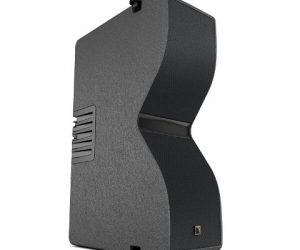


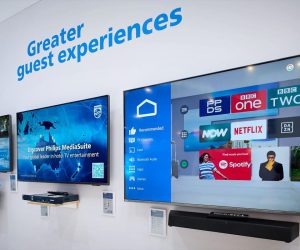

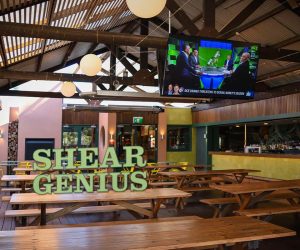

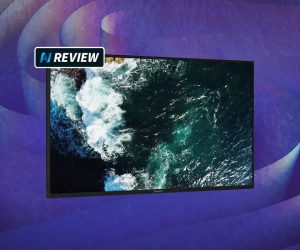


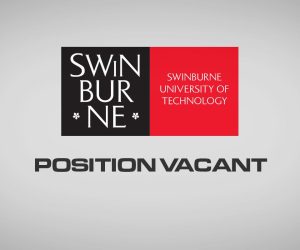


RESPONSES